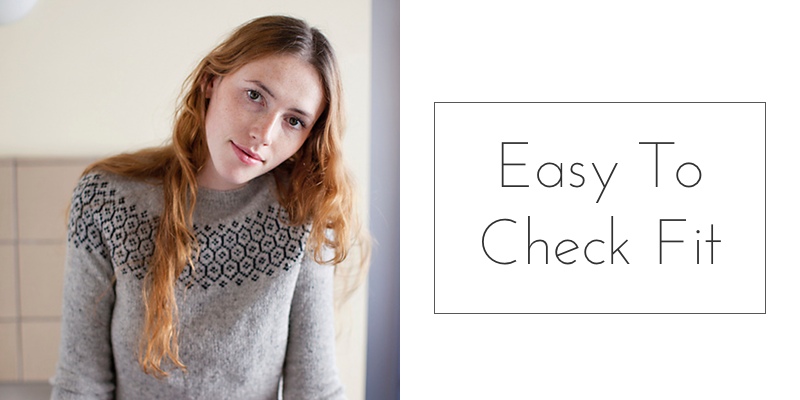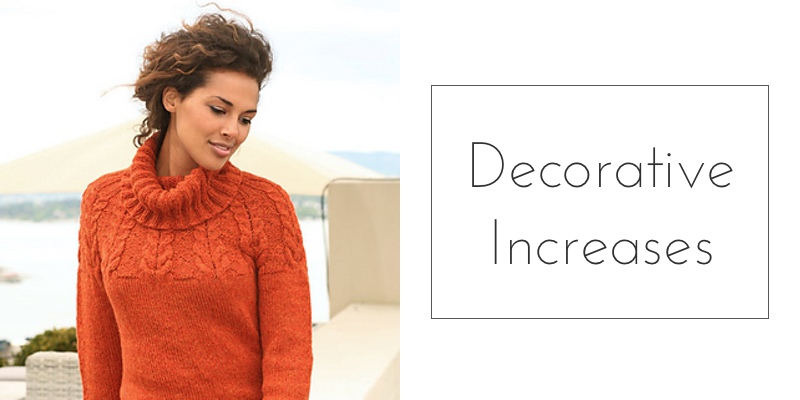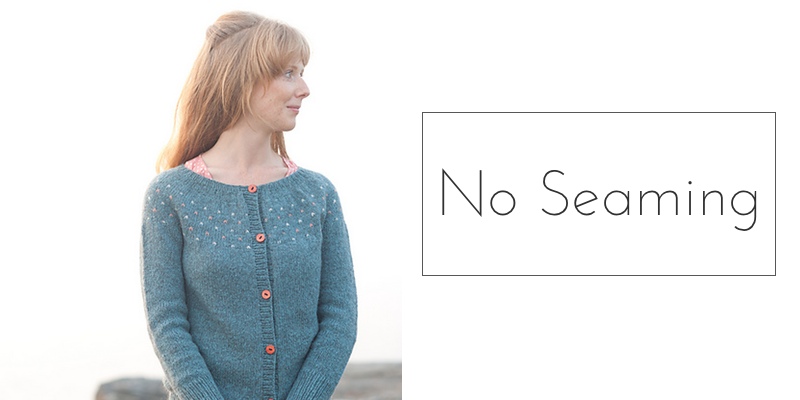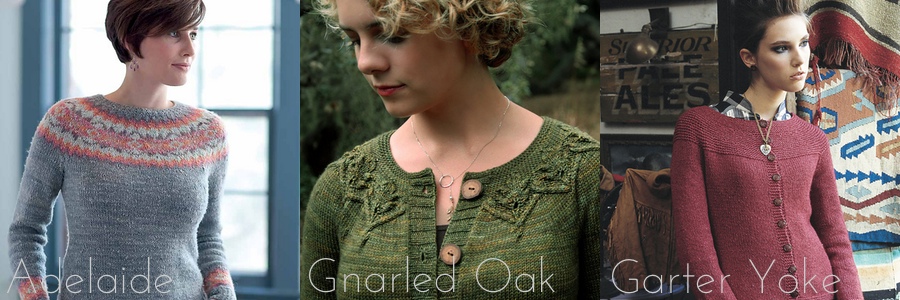Welcome back to the Sweater Construction series! If you haven’t already, take a minute to check out the other posts in this series. They don’t necessarily need to be read in order but the more you know the better prepared you will be to decide which sweater construction method is best for you.
[title text=”Circular Yoke” style=”bold_center”]Today we are going to look into the pros and cons of knitting a sweater with a circular yoke and give you some pattern ideas to try out this method.
The circular yoke style sweater is one of the easiest sweaters to knit from the top down but it can also be knitted from the bottom up. This style of sweater is unique in its lack of visible armhole shaping.
For the top down version, stitches are cast on at the neckline then increased at four even intervals to the widest circumference at the the armhole depth. As you’re knitting the yoke there is no difference between the front, sides and back of the sweater. When the yoke measures the desired depth, stitches for the sleeves are placed on a holder and the front and back are joined and worked in one round to the bottom edge of the sweater. The stitches on the holders are then picked up and worked in the round all the way down to the cuffs.
For the bottom up version, stitches are cast on at the hem of the sweater then knit in a tube up to the armholes. Sleeves are cast on at the cuff and worked up the the armhole. At this point the sleeves are joined to the body of the sweater and stitches are decreased in four even intervals up to the neckline.
This type of sweater has been around for quite a long time and is thought to have originated with Bohus Stickning. However the style spread and became very popular in the Shetland island region and Iceland. The Icelandic name for the circular yoke sweater is “lopapeysa” and is typically knit in the very warm “Lopi” wool.
Circular yoke sweaters have surged in popularity in the last couple decades with the rise of seamless sweaters. Their charming style and wide range of design possibilities makes them a dream to knit and experiment with.
[title text=”PROS of Circular Yoke Sweaters” style=”bold_center”]Let’s dive in and check out why you might want to try knitting a circular yoke sweater!
Easy To Check Fit
If you opt for the top down construction of this style of sweater it can easily be “tried on” by slipping it off the needle and onto some waste yarn or multiple circular needles. This feature makes it easier to judge the fit and modify accordingly. For example, sleeve length can be easily extended or shortened simply by ceasing knitting at the desired point. You will also have a clearer sense right away if you are going to run out of yarn or not, as you will be able to see the full progress of the entire garment as you knit it.
Decorative Increases
One wonderful thing about circular yoke sweaters the increases are distributed evenly around the neckline which works wonderfully with decorative increases. If the increases are decorative you can create a lacey look almost effortlessly. In the same vein, you can do invisible increases instead incorporate a beautiful, uninterrupted color work or texture patterns on the yoke.
No Seaming
The circular yoke sweater knit either top down or bottom up has no seams so when you’re done knitting your sweater is finished. For those of you that dislike the idea of seaming this factor alone may make you choose to try knitting a circular yoke sweater.
[title text=”CONS of Circular Yoke Sweaters” style=”bold_center”]Now that we’ve checked out some of the benefits of this construction method, let’s look at some drawbacks.
Lack of Structure
One of the disadvantages of sweaters constructed seamlessly is the lack of structure provided by seams. This can mean that you will be limited to yarn choices that include some structure and elasticity themselves, such as wool or wool blends, and plied yarn. With certain yarns, the sweater may twist on you over time, having been knitted in a spiral, which is what “in the round” technically ends up being. Overall the lack of structure can make for a less durable sweater.
Less Tailored Fit
Because the shoulders and armholes are not well defined on a circular yoke sweater, the yokes will have a less tailored fit than raglan or set-in sleeve silhouettes. But you can still get a trim fit with the addition of waist shaping.
Less Portable
In comparison to a sweater that is knit in small pieces and seamed together the one big piece may feel more cumbersome to work with as it grows into a sweater. You will need to mentally reckon with yourself that you will at some point have almost an entire sweater in your lap while you are still knitting with it, this puts more weight onto your hands and wrists.
[title text=”Circular Yoke Sweater Patterns” style=”bold_center”]Here are a few great sweater patterns using the circular yoke construction. I have included sweaters using both top down and bottom up construction within the yoked sweater style so there should be something for everyone. If this is your first sweater I recommend starting with a top down version as they tend to be simpler.
Adelaide Yoke Pullover by Kate Gagnon Osborn
Gnarled Oak Cardigan by Alana Dakos
Garter Yoke Cardigan by Melissa LaBarre




